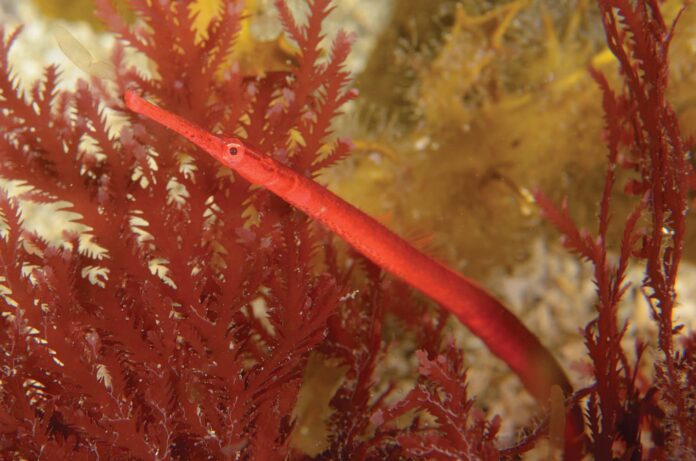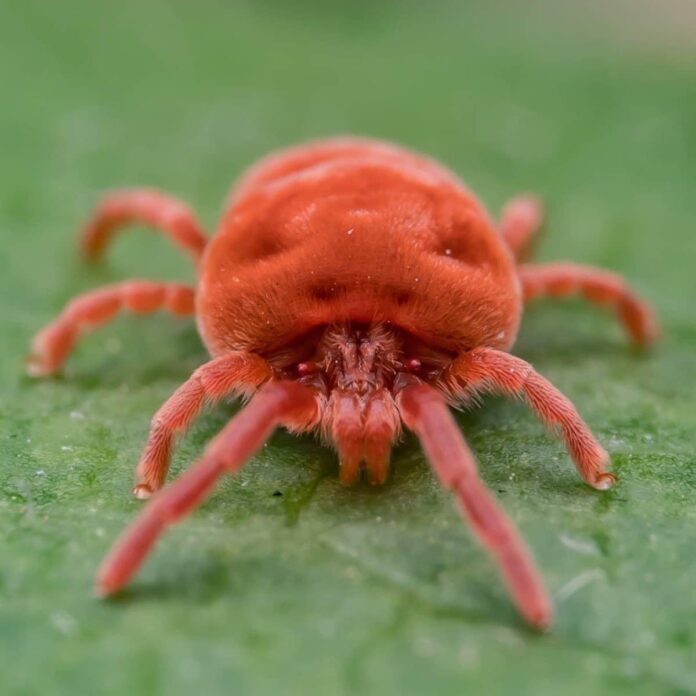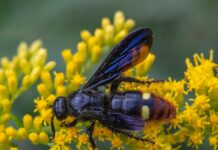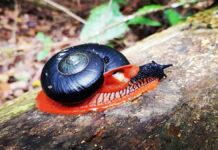New animal species keep on being discovered, and we are going to about 9 of them here. Since 2020, scientists have found some new animal species that people have never seen before. There are actually many of them but I will only include the most interesting ones. It took a while to look for their information, so I hope that you enjoy the list below.
1Gollum Snakehead

Scientific Name: Aenigmachanna Gollum
Here you are looking at the only genus in the family Aenigmachannidae that contains only two species. Both species are native to southwestern India, and this dragon snakehead was discovered in the Western Ghats foothills. This new bony fish species has a long slender body along with a very long anal fin and numerous scales. Because of their unique body features, the fish moves backward and forward just like eels do. The interesting thing about them is that the dragon snakeheads are among the few cave-dwelling fish in the world.
These living fossils rarely come to the surface since they spend most of their time underground. However, they would come up after flooding from heavy rains; hence sightings are rare. The area where the dragon snakeheads live is a biodiversity hot spot, hopefully, there will be more new discoveries to come.
2E.T Sponge

Scientific Name: Advhena Magnifica
The resemblance between this marine species with the space alien movie from 1982 is absolutely uncanny. E.T sponges live in the depths of the southwest coast of the Pacific Ocean. The long thin stalk is the sponge’s body while the upper part is its elongated head and huge eyes. This sponge species rise up on stalks with their bodies oriented to the face of the predominant current that carries tiny food particles. These peculiar sea creatures attach themselves to hard surfaces and feed on small bacteria and plankton that pass in the waters. A bunch of them makes a beautiful seascape on the seabed since they look so weird. No doubt why Chris Mah from the Smithsonian National Museum of National History called the scene the Forest of the Weird.
3Horned Frog

Scientific Name: Megophrys Oreocrypta
This is actually one of the newly discovered horned frog species that a biologist team has sighted. All four species include the Garo white-lipped horned frog, giant Himalayan horned frog, Himalayan horned frog, and yellow spotted white-lipped horned frog. These frogs do not have real horns, they received their names because of the fleshy horn-like projections on their upper eyelids. The biologists discovered the frogs in the northeast region of India which is a pristine and remote part of the country. According to one of the team members, “Northeast India is rich in amphibian diversity, and this region needs to be explored more.” So far, there are 80 known horned frog species and 15 of which are found in India. Plus with a number of new discoveries of other new animals and plants, many more species will be more visible.
4Joseph’s Racer Snake

Scientific Name: Platyceps Josephi
Found in Tamil Nadu, Joseph’s racer snake is one of the newly discovered animals in the 20th century. It has distinct white bands on its body and irregular white spots on its head. This snake species is non-venomous, and they live in open grasslands with rocky and scrub habitats. Not different from most non-venomous snakes, this one feeds on geckos, lizards, and small rodents that they can find. Their population spreads across the central and southern Tamil Nadu of India. Joseph’s racer snakes are genetically and morphologically distinct from the rest of the racer members in the family. These diurnal snakes are terrestrial with swift locomotion, but they are not doing well at the moment. Despite being non-venomous, their threats still exist which include road traffic and habitat destruction for farmlands, plantations, and more.
5Pine Rockland Trapdoor Spider

Scientific Name: Ummidia Richmond
Florida is a state of many things, and the discovery of a new venomous spider species there is not uncommon. Experts believe that venom from a bite from a Pine Rockland is as painful as a bee sting. Not different from the other members in the trapdoor family, this one also builds silk-lined burrows underground with a trap door. Once an unfortunate prey passes by, these ambush predators quickly emerge from its hiding and snatch the meal inside. At the same time, this endangered species spends its entire life in that same burrow for up to two decades.
A female trapdoor spider of this species can live up to 20 years or longer in her burrow. As for the males, they get to live for only about 7 years because they will die after mating. At 7 years of age, the males will leave the shelter to mate and die shortly after that. Despite being large and venomous, all trapdoor spider species still face some predators and threats. Their natural predators are birds and parasitic wasps, and habitat destruction is one of the main threats to their population. Because they have very small ranges, losing their habitat can shrink their number fast.
6Red Wide-Bodied Pipefish

Scientific Name: Stigmatopora Harastii
At a quick glance, nobody would tell that this is actually a fish species since it looks more like a red stick. It has a long snout and thread-like prehensile tail with a brown, green, or red body depending on the species. The red wide-bodied pipefish live in habitats that are often subject to strong surges where they sway in unison with red algae. Sometimes they also associate with pale red finger spongers or some other red organisms around. The combination of their coloration and surroundings allows them to perfectly camouflage themselves. You can find them at depths between 12 – 25 meters on the East Coast of Australia if you look hard enough. Currently, their population occurs in only 3 localities of central New South Wales including Botany Bay, Jervis BBa, and Shellharbour.
7Salazar’s Pit Viper

Scientific Name: Trimeresurus Salazar
A Harry Potter fan can tell right away that the name of this new species is from Slytherin. The lead researcher named the snake after Salazar Slytherin to thank J.K Rowling for introducing the world to the Harry Potter universe. The name of this nocturnal snake also matches because the House of Slytherin is associated with the color green. This pit viper species belongs to the Himalayas, a home to many new animal and plant discoveries in recent decades. Salazar’s pit vipers have green bodies, and the males have a unique reddish-to-orange stripe on their bodies and heads. This genus is venomous, and there are at least 48 known species at the moment in east and southeast Asia. The main threats to their population are development activities such as agriculture, hydro-electric projects, and road widening which destroy their habitats.
8Scale Worm

Scientific Name: Peinaleopolynoe
We are all familiar with worms, but this new species take the whole family to a whole next level. A scale worm can be from 1 centimeter to 20 centimeters long with a broad and flat body full of short hair bristles. The thing is that the bristles are the scale-like elytra on the dorsal surface that resembles scales. Those bristles are along the sides, and there is a pattern of overlapping scales on the upper side of the body. The color is gray or light fawn, and each scale is marked with a distinctive c-shaped brown pattern. Scale worms have 2 pairs of eyes and 2 single side antennae.
The ranges of these worms are along the New South Wales coasts and from South Australia to southern Western Australia. More than that, scale worms are active hunters in protected environments like under the stones where they dwell in. Scale worms feed on small prey like crustaceans, echinoderms, other polychaetes, and snails. At the same time, they also feed on hydroids and sponges while they may scavenge sometimes as well. You can find these new worm species in the deep sea below 500 meters from hadal trenches to shallow intertidal waters. Most of the time, they live together with sand dollars, sea anemones, sea cucumbers, sea dollars, and sea urchins.
9Velvet Spider

Scientific Name: Loureedia Colleni
This is another new spider species found in Spain in early 2020 whose population is actually already in danger. It is a tiny spider that belongs to the velvet spider family with a fury body. Speaking of body, the coloration of this species is black and white while other species have bright red coloration. It is named after the singer and former lead guitarist of The Velvet Underground. These underground spiders are common in Africa and the Middle East, and this is the first time they are found in Europe. Since Spain is developing the southern coast for agricultural purposes, that also plays a part in threatening their population as well. Their 2 main threats are climate change and habitat loss although they are not classified as endangered yet. This species prefers colder climates, so some will likely die when the climate warms even just a little.
Related Post: Dangerous Invasive Species




